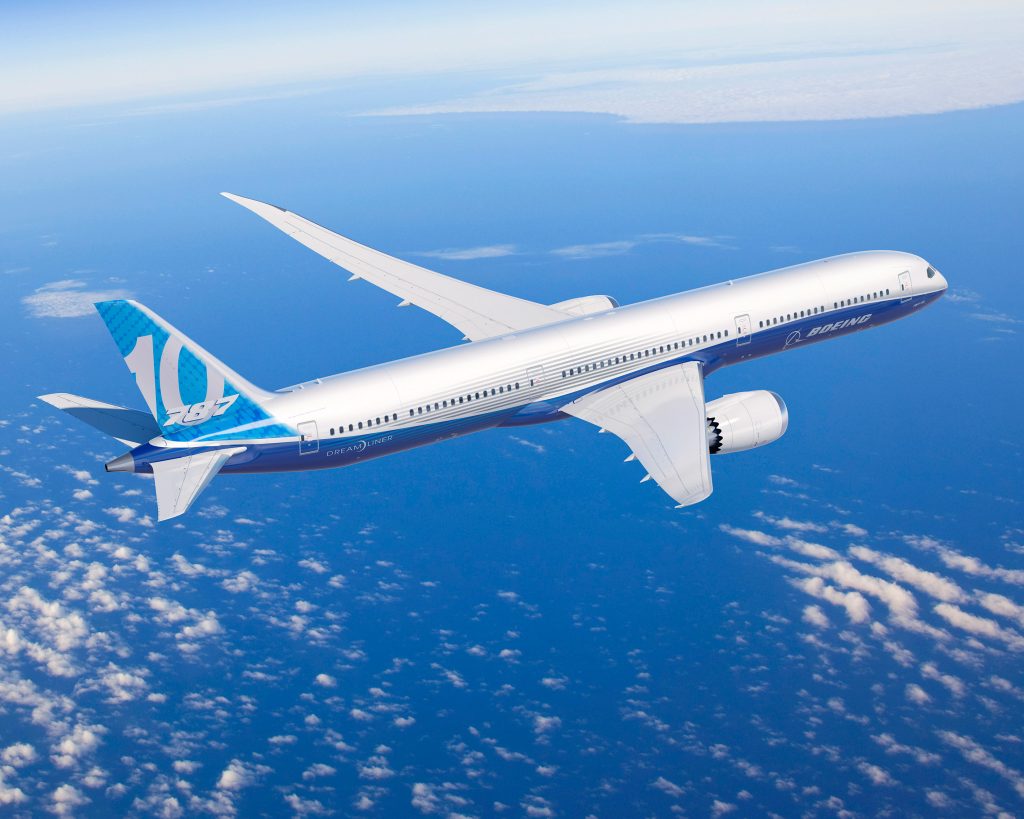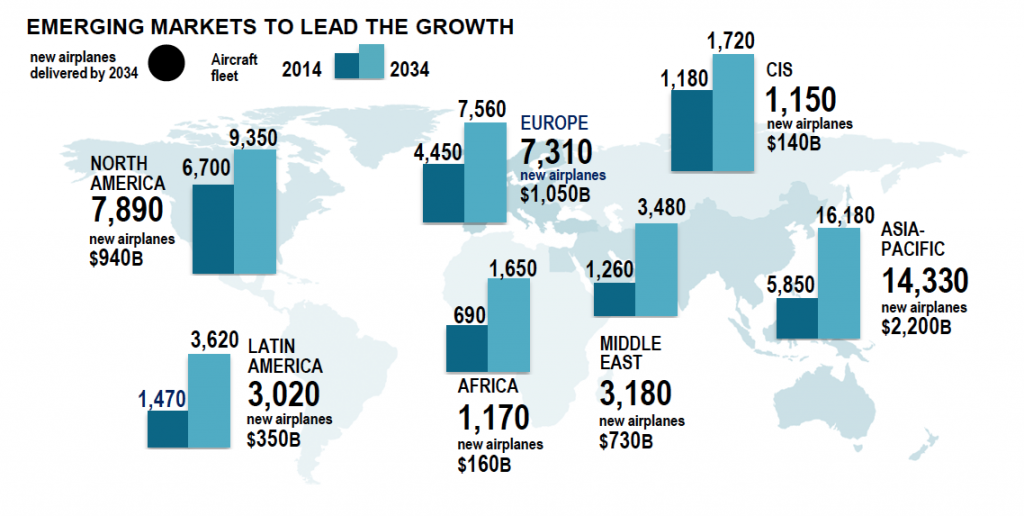 Boeing has projected a demand for 38,050 new aeroplanes over the next 20 years, an increase of 3.5 percent from last year’s forecast. Boeing released its annual Current Market Outlook (CMO) in June, estimating the total value of those new aircraft at $5.6 trillion. 14,330 of these aircraft will go to the Asia-Pacific region.
Boeing has projected a demand for 38,050 new aeroplanes over the next 20 years, an increase of 3.5 percent from last year’s forecast. Boeing released its annual Current Market Outlook (CMO) in June, estimating the total value of those new aircraft at $5.6 trillion. 14,330 of these aircraft will go to the Asia-Pacific region.
A downloadable CMO infographic is available here: http://bit.ly/1KTLv6M.
“The commercial airplane market continues to be strong and resilient,” said Randy Tinseth, vice president of Marketing, Boeing Commercial Airplanes. “As we look forward, we expect the market to continue to grow and the demand for new aircraft to be robust.”
By the end of the forecast period, the commercial aircraft fleet will double, from 21,600 in 2014 to 43,560 aeroplanes in 2034. Fifty-eight percent of the 38,050 aeroplanes delivered over that time will be to accommodate growth.
The single-aisle market continues to be the fastest-growing, largest overall segment, requiring 26,730 airplanes over the coming two decades. This sector is fueled by growth in low-cost carriers and airlines in developing and emerging markets.
“At the heart of the single-aisle market are the Boeing 737-800 and the future 737 MAX 8,” said Tinseth. “These airplanes offer customers the most fuel efficiency, reliability and capability in this class.”
About 35 percent of the single-aisle market will go to low-cost carriers, Tinseth noted. “Low-cost carriers will require airplanes that combine the best economics with the most revenue potential. With 20 percent lower fuel use, the 737 MAX 200 will be the ideal machine for them.”
Boeing forecasts that the widebody segment will require 8,830 new aeroplanes, led by small widebody aircraft in the 200- to 300-seat range such as the 787-8 and 787-9 Dreamliner. Boeing explained that this year’s forecast reflects a continued shift in demand from very large aircraft to efficient new twin-engine products such as the 787 and new 777X.
While airline growth still accounts for the majority of new demand, a large and growing number of aging aircraft will require replacement. About 2 to 3 percent of the installed fleet will require replacement each year.
“The 737 MAX, 777 and 787 are perfectly positioned to capture this important wave of replacement,” Tinseth said.
The air cargo market continues to strengthen, and will drive demand of some 920 new aeroplanes over the 20-year forecast.
“We’ve seen two years of solid growth in the air cargo market and we expect that growth to continue,” Tinseth said. “That’s great news for our line of production freighters, including the 747-8, 767 and 777.”
The full report can be found at www.boeing.com/cmo.
